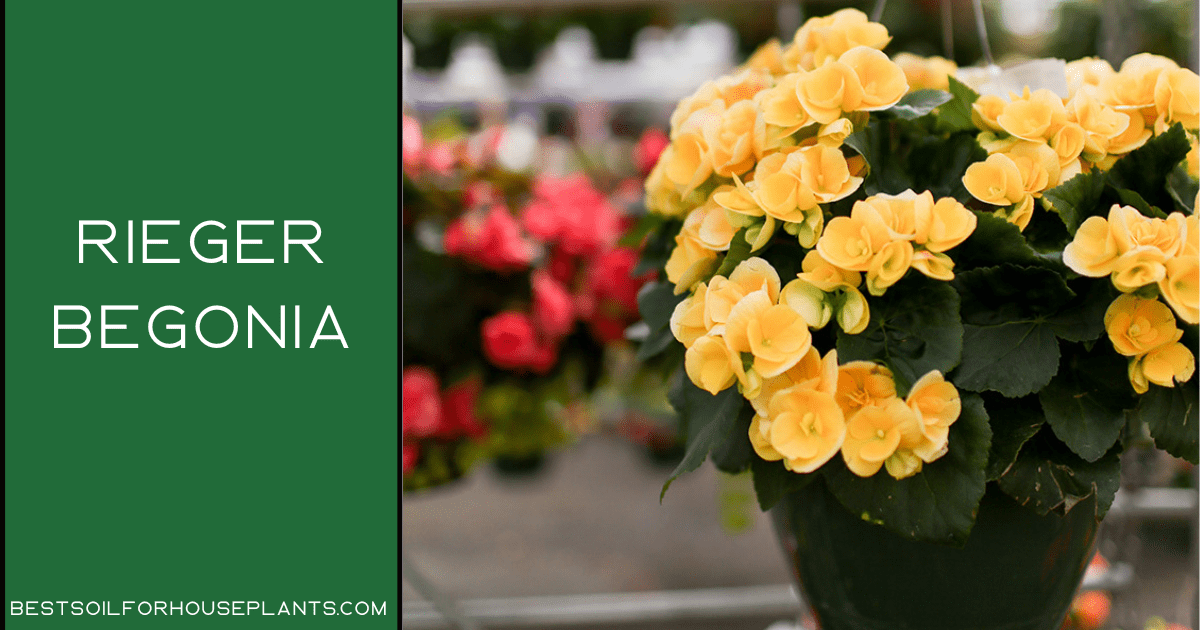Looking for flowers to decorate the window in the hall or in the kitchen? You can try planting a Rieger begonia!
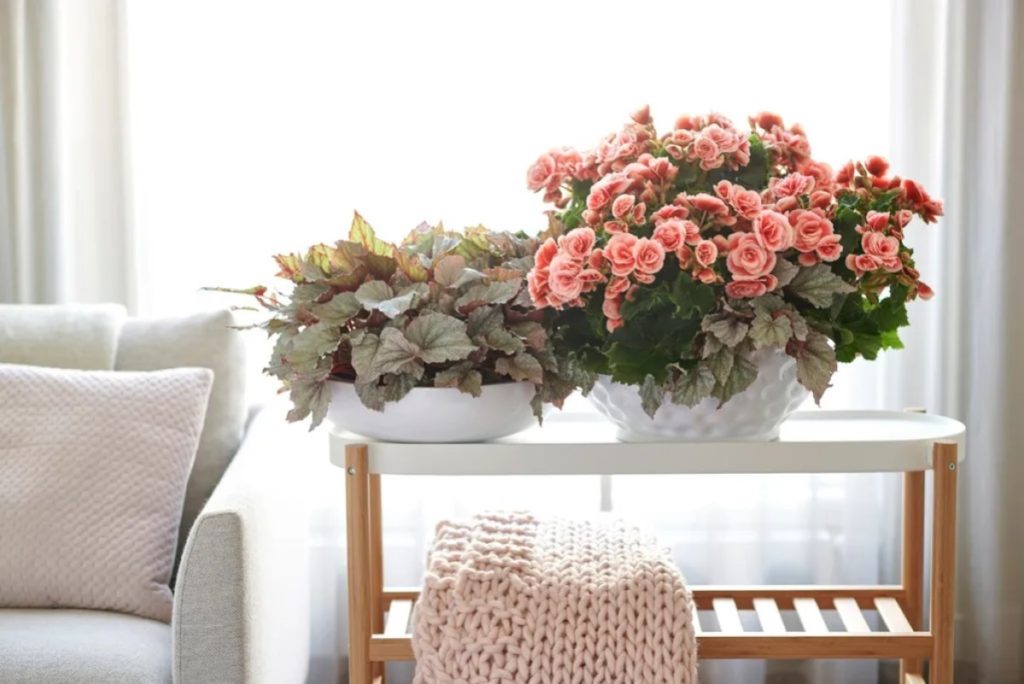
Rieger begonias (begonia x hiemalis) are popular flowers with showy flowers. There are plants with pink, red, cream, and white inflorescences. This variety is a hybrid of fibrous wax begonias and tuberous begonias. It is very important to properly care for Rieger begonia. If you bought Rieger begonia plants or didn’t know how to care for an Elatior begonias, begonia Socotrana or the other same plant, keep reading. In this article, you will learn all the rules for growing begonias. Thanks to this, it will delight you as long as possible.
What does a rieger begonia plants look like?
This flowering begonia x hiemalis has a spherical shape and fleshy shoots growing up to 30-35 cm. It blooms until frost and is quite resistant to a lack of water. It produces many individual flowers 2-3 cm in diameter, in shades of pink and red, in just a few cultivars. In addition to its charming flowers, the ever-flowering begonia has ornamental leaves with glossy lamellae. In some variants, they are colored red or purple. Bright scarlet or hiemalis begonia usually blooms in winter. Many gardeners say that begonia x hiemalis is seasonal. But with proper care, the beautiful appearance of begonia lasts for many years.

How to choose the Rieger begonias for the home?
You can find tuberous begonia in offline or online garden centers. Look at the photo of the plant and choose the right option according to the design of your room.
How Rieger begonia plants grow?
Growing Rieger begonia at home begins with the choice of containers and preparing the soil mixture. To grow begonia seedlings, shallow seedling containers, trays, or boxes with high sides are suitable. The container should be compact so that the care of the sprouts is simple, as well as to facilitate the picking process.
In peat pellets
Another way to grow rieger begonia plants seedlings is to use peat pellets. They greatly simplify the care of Rieger begonia. However, please note that the soil for Rieger begonia in tablets dries faster, so the humidity level will have to be constantly monitored. When the soil is moist and containers for begonias are ready, you can proceed directly to sowing.
The Rieger begonia plants propagate not only by seeds but also by tubers. In the latter case, the tubers are planted in the substrate with a convex side. Germination of tubers is carried out from February to the end of April. Tubers are planted at room temperature and watered a little. Do not allow stagnant water, but do not overdry the soil.

However, we are talking about growing container Rieger begonia plants from seeds, so now we will tell you how to sow. To begin with, after buying a package of seeds of a flowering plant, you can sometimes see something that looks more like dust than seeds of Rieger begonia. In order to evenly distribute such small seeds during sowing, we recommend using the following tricks. Indoor begonia, the care of which we will discuss below, is sown according to the following scheme:
- Seeds are distributed over the surface of the soil, without sprinkling the substrate on top. Sometimes sowing is carried out directly on the snow that lies on the surface of the soil. When it begins to melt, the seed will be distributed over the entire area.
- After sowing, the seeds are sprayed and covered with glass or polyethylene. Remove cover a few days after germination.
- The boxes with Rieger begonia are placed in heat at 23-25 ° C. When Rieger begonias appear, they should be placed in the partial sun for 12 hours.

Sowing is carried out in January-February. If you have the opportunity to purchase granular seeds, it is better to choose them. Such seed is much easier to sow. They are especially well suited for peat tablets. Such seeds of Rieger begonia can be sown pointwise, without unnecessary difficulties. One of the main “pluses” of peat tablets is the avoidance of picking because this procedure can harm the fragile root system of the plant. How to sow seeds of Rieger begonia in tablets:
- Place the tablets in a tray of water to soak.
- One granule of Rieger begonia is placed in each tablet, then sprayed with warm water.
- The tablets are covered with glass to maintain an optimal level of humidity.
- Watering in this case is carried out through the pan.
Crop care
Before germination, crop care is simple: you need to monitor the soil moisture by spraying it from a spray bottle and maintain a comfortable room temperature. Before removing the glass or film after the seedlings appear, the seedlings need to be hardened. To begin with, open the container from sowing for 25 minutes. Gradually increase the ventilation time. Thanks to this technique, they are not only hardened, but fungal diseases are also prevented.

When you remove the glass, the containers with sprouts must be transferred to a well-lit place, while the temperature must be lowered to 16°C. At this stage, feeding is not necessary.
Picking
Caring for room begonia involves a mandatory pick if you did not sow the seeds in peat tablets. When and how to pick:
- The first time when 2 true leaves are formed on the sprout. Take the same substrate as for sowing, and a slightly larger container and place the plants at a distance of 3 × 3 cm.
- The second time – 30 days after the previous one. Humus is added to the substrate, and the plant layout: 6 × 6 cm. Another 14 days after transplanting, the plants are fed (use complex fertilizer for this).
- The last third time they are transplanted into a separate container. If you plan to grow begonias in a flower bed, only repot them when all spring frosts are gone or you risk losing the flower entirely.
Watering and fertilizing seedlings
Begonia care at home also includes watering and fertilizing. In general, caring for annual plant seedlings is easy. The earthen ball should not be allowed to dry out; as it dries, it is necessary to water the plants. However, it is also impossible to transfuse seedlings – the root system is still too weak, and rotting of the roots can easily be caused. When feeding plants with fertilizer complex, the rate indicated on the package must be reduced by 2 times so as do not to harm the root system.
The right planter for a flower
Growing a flower can be in a hanging planter or a pot with drainage holes. Many gardeners grow indoor plants in plastic pots. But in such pots for plants, you need to monitor the level of moisture, as it evaporates more slowly. The content of ornamental flowering begonias is not too different from the conditions of maintenance of ornamental leafy ones. They also prefer diffused light, especially during the flowering period.
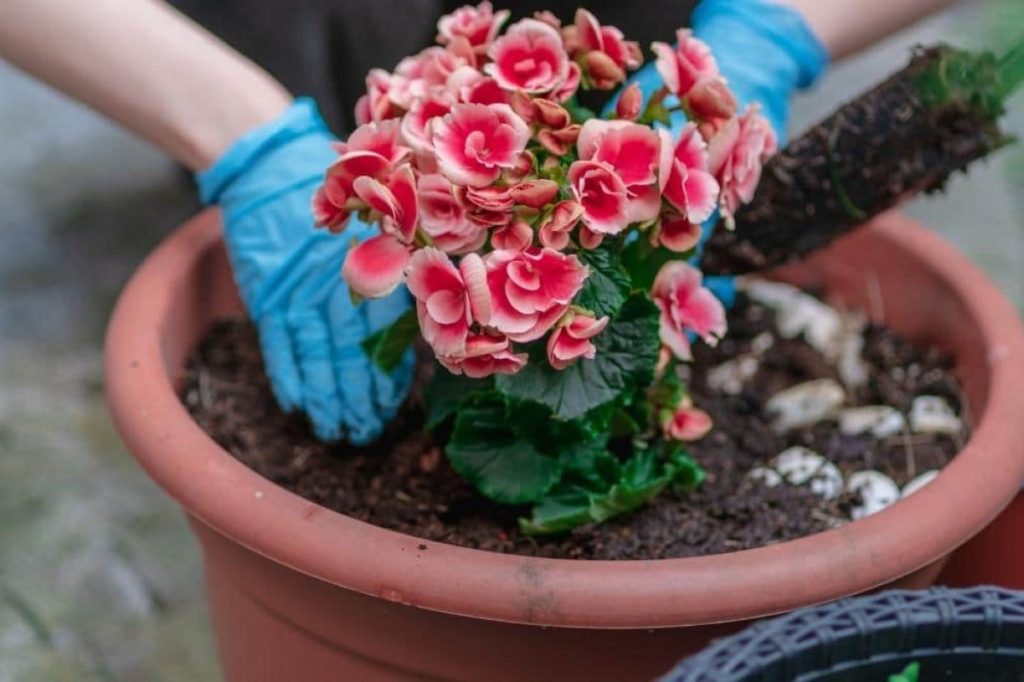
For planting these begonias, you should choose a fairly loose and fibrous soil (heather soil mixed with garden soil with the addition of 10% rotted manure is best). For potted plants, you should not choose too wide and large pots, flowering begonias do not have a too developed root system, therefore, so that the roots do not rot and the soil in the pot does not turn sour, it is optimal to take small pots, 14 cm in diameter.
And it is necessary to transplant decorative flowering begonias into fresh soil annually: either immediately after flowering, or before the start of growth, early-early, back in February-March. It is optimal to use clay pots for flowers. They absorb moisture well and keep the soil drier.
How to care for begonia plants?
The Rieger variety is easy to care for. Therefore, beginner gardeners should learn more about this flowering plant. Proper watering and sufficient lighting are very important. Let’s take a closer look at these nuances below.
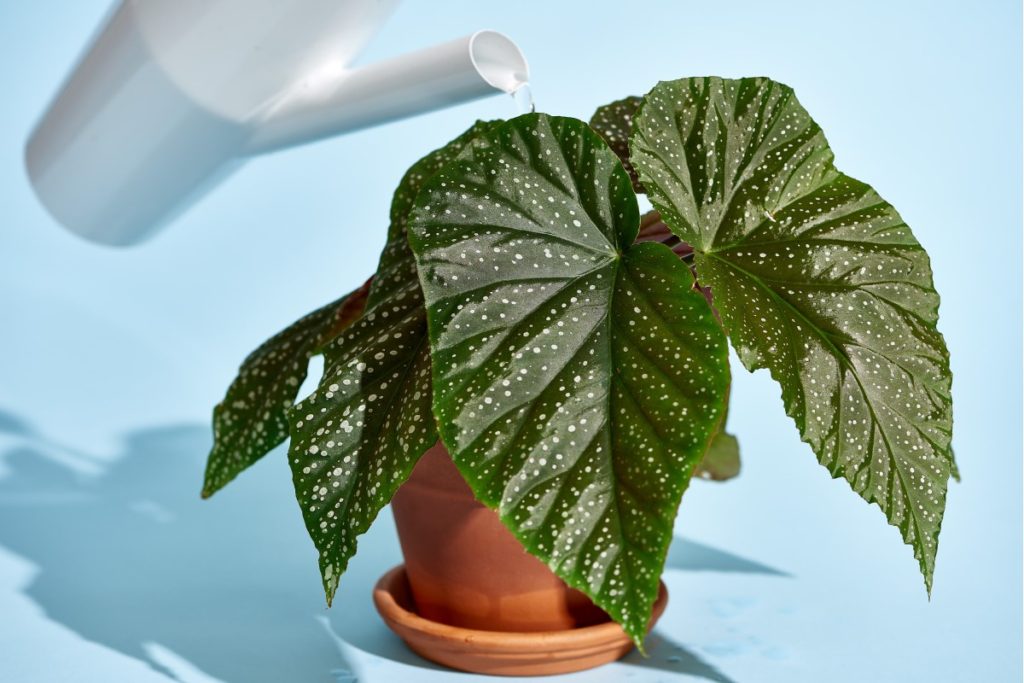
- The soil. Well-drained soil for planting colorful flowers is very important. Regular soil should be mixed with half peat moss for high absorption and pH control. This will protect the plant from the appearance of root rot with excessive soil moisture.
- Temperature. The growing temperature for begonias is between 61 and 70 degrees Fahrenheit. At the same time, it must be accepted that 61-65 degrees Fahrenheit is the temperature for the dormant period of plants, and for flowering plants need to expect temperatures not lower than 68 degrees Fahrenheit. If it is much higher than 70 degrees Fahrenheit, the flowering period of the plant will be shortened, it will stretch and lose its fullness.
- Watering. To check whether the plant needs to be watered, insert a cardboard stick into the ground. If it`s soil moist, then it doesn’t need to be watered now. Check the humidity level after a few days. In winter, it is better to water the plant less often than excessively. In winter, moisture does not evaporate as quickly.
- Lighting Begonia Rieger. Rieger begonias need a partial shade or indirect light. In early winter, you can put the plant under direct light if the windows are covered with curtains. So the flower will be in filtered sunlight.
- Fertilizer. Fertilize the plant in spring or autumn. You need to fertilize for two weeks. It is important to choose a period when begonia is actively growing. When feeding the plant, a fertilizer with a high level of phosphorus in the composition is required. So you can make the plant stronger.
- Humidity. It is best to spray the potting soil of the plant rather than the leaves. It is important to monitor the level of moisture. Excessive moisture can cause fungal disease. Spraying is best in the morning so that excess moisture evaporates during the day. Spraying in the evening can reduce fumes and lead to powdery rose and leaf spot.
How to propagate begonia Rieger?
To have several attractive houseplants plants in your home, you can propagate the flower with stem cuttings. For the correct reproduction of begonias in this way, it is important to consider the following rules:
- Cuttings should be cut from the parent plant when it has faded.
- Cover the stem cuttings with a plastic bag and make holes for ventilation.
- Keep the cuttings in a dark and dry place.
- After a week, look at the cuttings, plant sections should be solid.
- Root hairs on new shoots should form after 2 weeks.
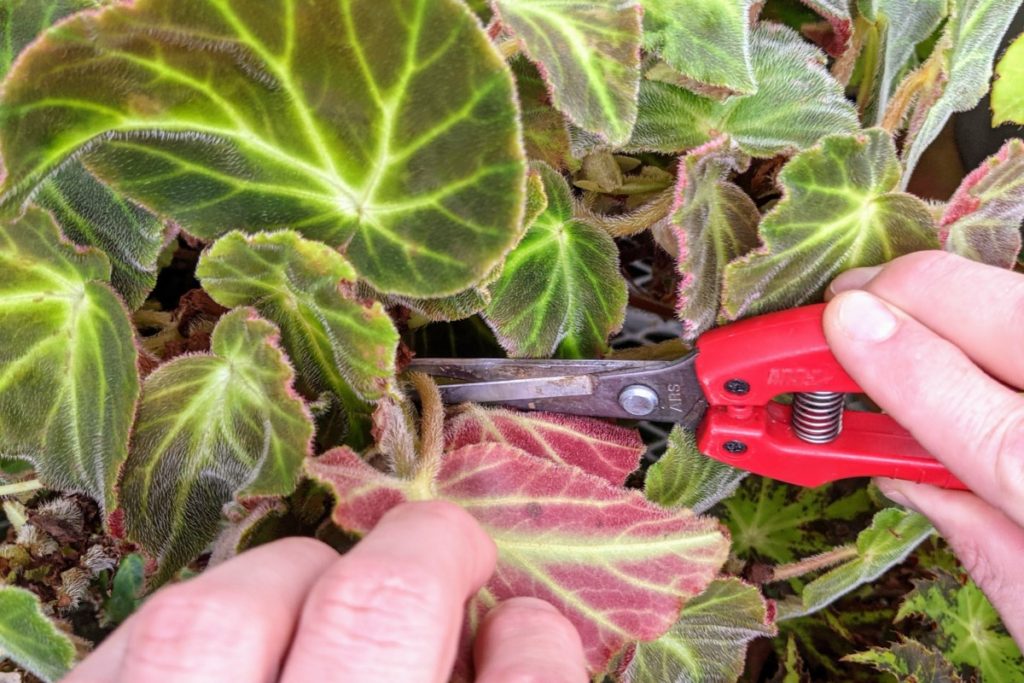
18-21 days after rooting, they are planted in pots with a diameter of 7 cm in a mixture of hardwood, peat soil moist and sand (1: 1: 1), watered sparingly. Then, the plants are transferred into 9-cm pots in a soil mixture of hardwood, peat moss, humus potting soil, and sand (2: 1: 1: 1). With transshipment, shoots are pinched that have reached 12-15 cm. The temperature is maintained at least 18°C. During the summer, pinching is carried out 2-3 times to prolong flowering. Water regularly, shade from bright sunlight.
The second time they cross over at the beginning of July and pinch the tops again. At the second transshipment of deciduous land, only one part is given. Plants bloom in August and bloom until October. After 4 months, the young plant should bloom. Care for new flowering plants will be the same as for your homemade Rieger begonias.
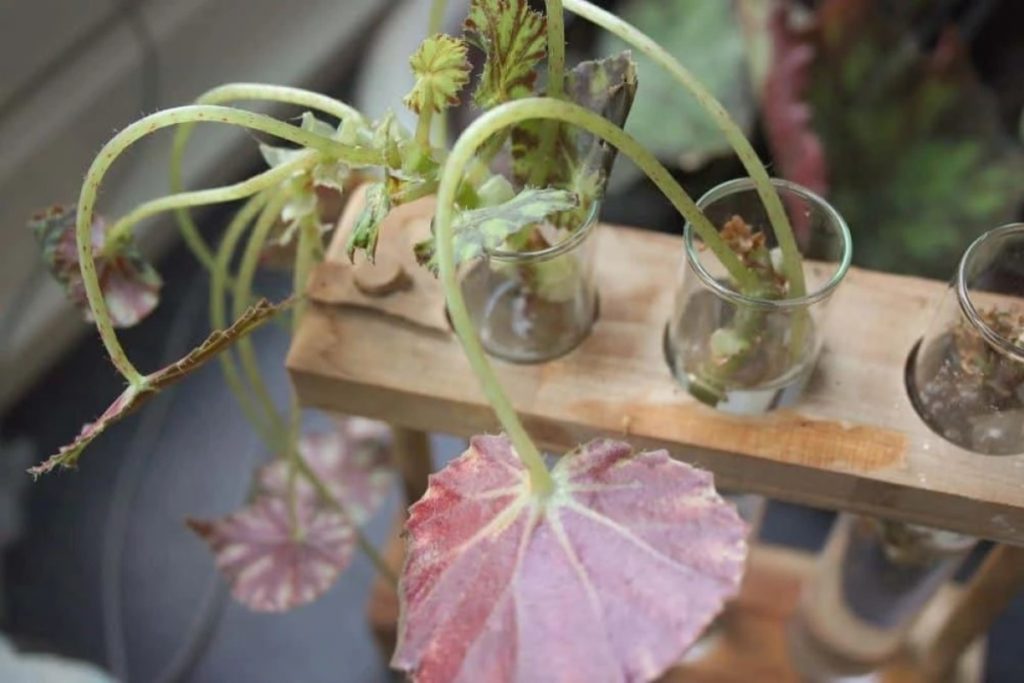
Pests and diseases
Even with proper and regular care, begonias can get sick. The most common begonia pests are spider mites, scale insects, and mealybugs. If the container plants are affected by these pests, then dark spots appear on the leaves of the flower. For indoor begonias, whiteflies are also dangerous. By sucking the juice from the leaves of the plant, both mealybugs and whiteflies secrete a liquid that forms black mold on the leaves. The disease can also be from excessive watering. Then the begonia leaves turn yellow and fall off. If you water the plant not at the root, but on the leaves, mold can form.

Begonia Rieger is a fairly disease-resistant plant. But problems can arise due to improper care:
- Burns in the form of spots on the leaves – from direct sunlight, dry tips near the leaves – the cause may be dry air
- Fungal diseases – from getting water on the leaves, changing the color of the leaves, and their folding. Perhaps there is an overabundance of fertilizers.
- Lack of light – leads to stretching of shoots, yellowing of leaves, and lack of flowering.
But the most common cause of poor health, and sometimes the death of a plant, is waterlogging of the potting soil.
How to treat begonia from pests?
Dilute the synthetic insecticidal soap and wipe the affected areas with a cotton swab moistened with the resulting liquid. When placing beautifully flowering begonias in open areas, powdery mildew or aphids may appear. You can сlean the leaves with a cotton swab dipped in special tools, but they do not always help – in this case, they get rid of the plant or remove faded flowers at first.

Why is the begonia not blooming?
Surely you, before growing this flower at home, searched for information on the Internet on the request: “How to care for begonias?”. And they found articles about begonia diseases. However, sometimes during the cultivation of this plant, atypical situations arise. Therefore, it is important to know what to do in such cases.

So, for example, if the begonia grown at home does not bloom, the reasons may be as follows:
- Lack of light for the plant.
- It is not warm temperatures in your room. It is not comfortable for begonias.
- Humidity is too low.
- An excess of fertilizer or bad quality of peat moss.
- Watering with unsettled water.
- Drafts.
If your white flowers do not want to bloom, change the conditions of their maintenance and watch the plant. Another reason why begonia does not bloom is that it is time to rejuvenate the plant.
Begonia buds appeared and immediately fell off
If buds appeared on your begonia and immediately fell off, this may indicate a weakening of the flower. The reasons most often lie in non-compliance with the rules of irrigation and lack of nutrients. Try to change the watering and feed the plant with mineral fertilizers.
Other problems that may occur with begonias
If you notice that the leaves of flowering plants have begun to dry out and you see faded flowers, the cause may be dry air in the room and poor watering. To remedy the situation, water the plant generously and place it where it is cooler. Spots of yellow color on the leaves of the flower indicate the defeat of the cucumber mosaic. Such instances will have to be deleted.
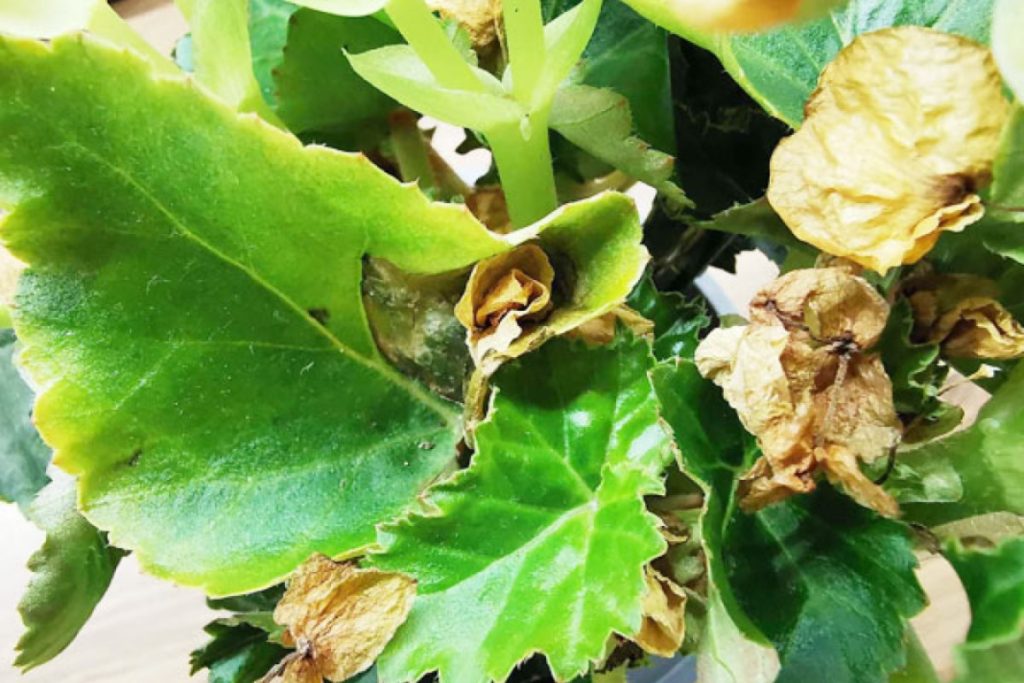
If the leaves not only turned yellow, but also drooped, this may mean that the plant is cold, and water has stagnated in the regular potting soil. Wait for the soil to dry and move the begonia to somewhere warmer.
Why grow begonias at home?
If you properly care for the Rieger begonias, they will delight you with beautiful flowers all season long. You can hang many flowering plants in pots and decorate the front of the house with them. Propagating a flowering houseplant is very simple, then in a couple of years, you can create a whole flower bed with homemade begonias.
Growing Rieger begonias at home are not only for aesthetic reasons. This plant has been modified. Thanks to the phytoncides that are in the leaves, begonia purifies the air in the body. Also, with the help of begonias, they fight against staphylococcus and other pathogens.

The presence of begonia in improving immunity and helps relieve fatigue. Since the flower increases brain activity, it is recommended to grow it not only at home but also in the office. The Rieger begonias tend to purify the air of dust, which is why it is often planted in a house where repairs have just ended.
Rieger begonias are also known for their healing properties. If you make an infusion of begonia flowers, it is used to treat burns, ulcers, and wounds. The begonia root system is used to treat conjunctivitis, and the juice from the leaves is used to relieve headaches.

As you can see, there is nothing complicated in growing Rieger begonias. If a growing microclimate occurs and no feeding occurs, it will be delayed for a period of time. Follow the recommendations to extend the life of your begonia. The flower will thank you generously for all the beautiful and varied flowering, which, depending on the species, can last almost a whole year.

